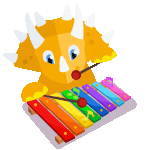Discover the Magic of Hungary: Festivals, Heroes, and Fairy Tales
Hungary is rich in cultural traditions and national celebrations, many of which are deeply rooted in history and folklore. These events not only bring families and communities together, but also teach children about Hungarian identity and values in a fun and engaging way.
Farsang: Carnival Season
Farsang is a joyful festival season that takes place throughout February and marks the end of winter. Children and adults dress up in colorful costumes and participate in lively parades, parties, and dances. One of the most famous events during this season is the ‘Busójárás’ held in the town of Mohács. People dress up as scary creatures and monsters to chase away winter and bad spirits. This tradition is similar to Bulgaria’s “Kukeri” and includes music, dancing, and the symbolic burning of winter.
March 15: Revolution Day
On March 15, Hungarians commemorate the 1848 Revolution against Habsburg rule. This day is known as the “Hungarian Spring,” representing the fight for independence and freedom. Across the country, the red, white, and green colors of the Hungarian flag are proudly displayed. Children in schools often wear cockades and recite poems to honor the heroes of the revolution.
August 20: St. Stephen’s Day
This national holiday celebrates the foundation of the Hungarian state and the crowning of its first king, St. Stephen, in the year 1000. Festivities include parades, folk music, traditional bread baking, and fireworks over the Danube River in Budapest. It is a patriotic day filled with pride and joy.
October 23: 1956 Uprising Memorial
On October 23, Hungary remembers the brave individuals who rose up against Soviet control in 1956. This day is marked by flag ceremonies, speeches, and educational activities that help children understand the importance of freedom and resilience.
The Mythical Origin of the Hungarians
Hungarian legend tells the story of two brothers, Hunor and Magor. While hunting a magical deer, they followed it into a land full of wild animals and fish. The deer vanished in a lake, but the brothers soon met two princesses dancing in a field. Hunor and Magor fell in love with the princesses, married them, and so did their followers. The descendants of Hunor became the Huns, and the descendants of Magor became the Magyars—the Hungarian people. This beautiful tale is often shared with children to explain the mythical roots of their heritage.
Learn More with Dinolingo
Festivals and stories are a great way to engage children in learning Hungarian. At Dinolingo, kids can explore Hungarian through fun videos, songs, games, and stories that reflect the language and culture. With 50+ languages, offline options, and a family-friendly dashboard, Dinolingo makes learning both playful and educational.
Start Learning a New Language Today!
Best Language App for Kids.
7-day free trial. Then only $19/month. Cancel anytime.
